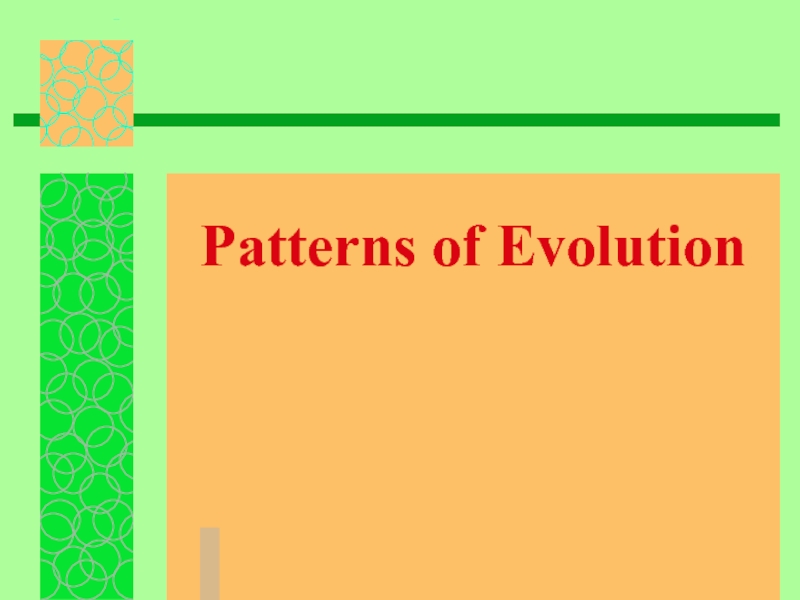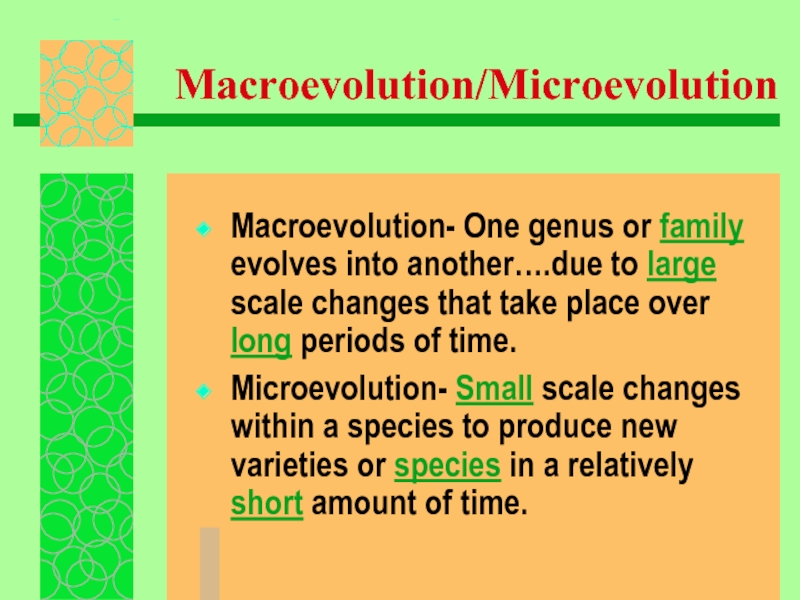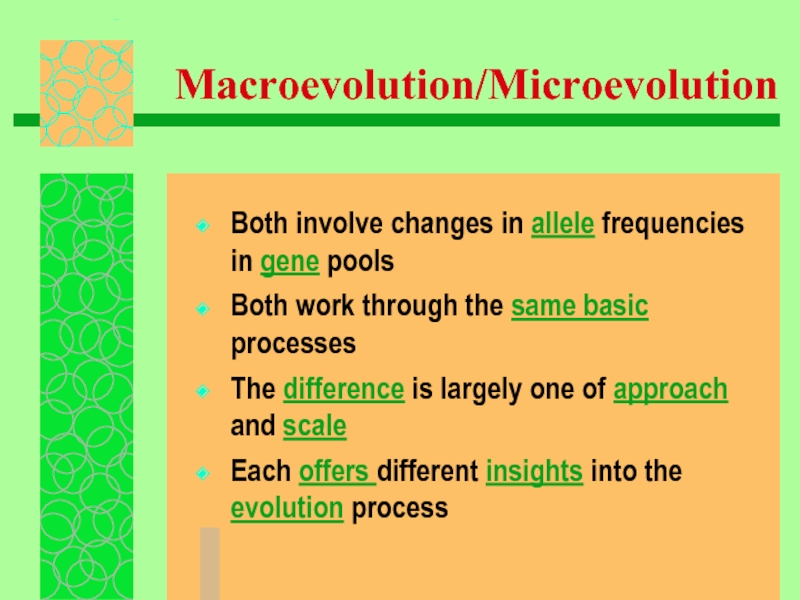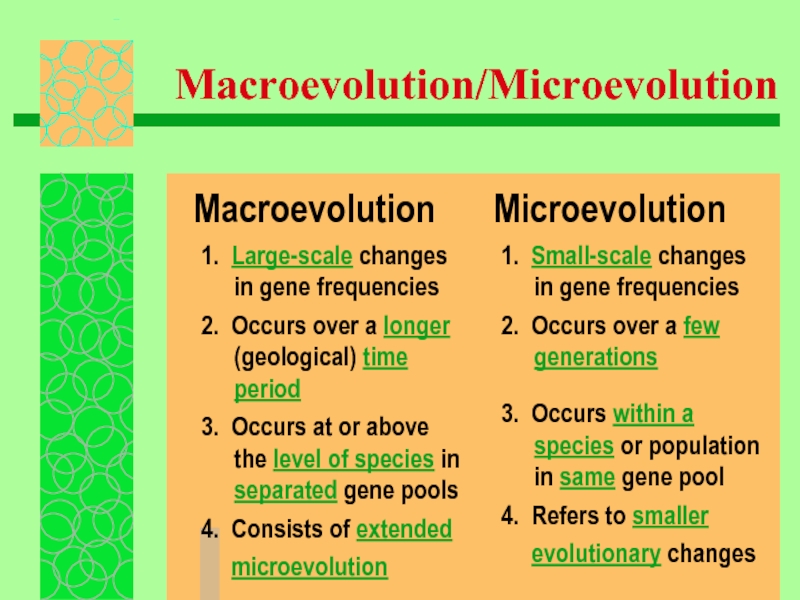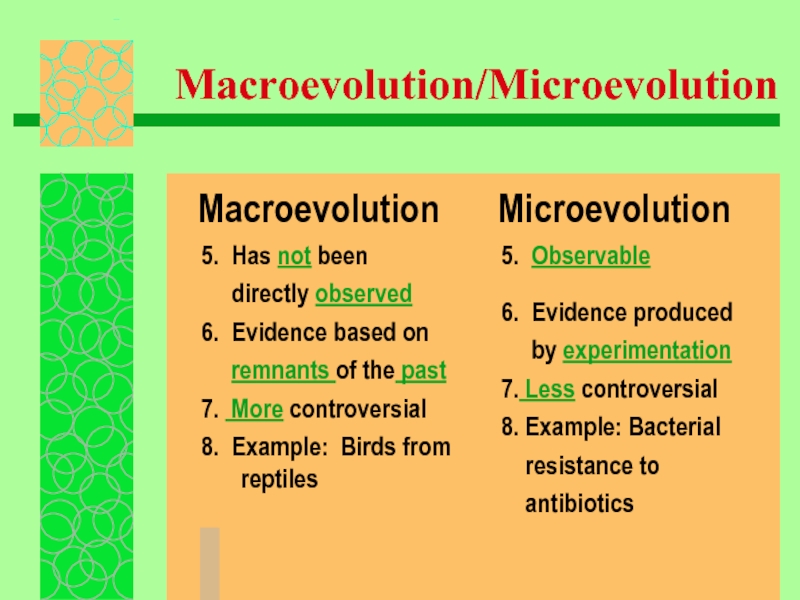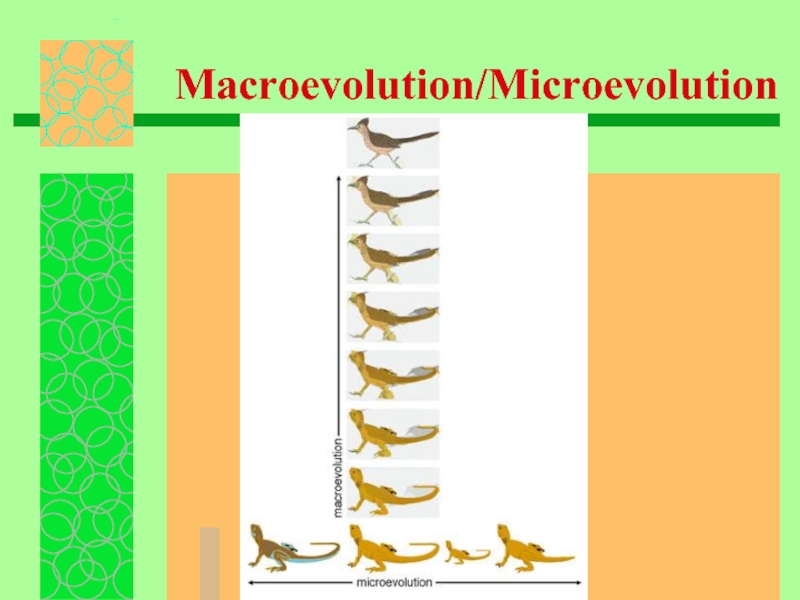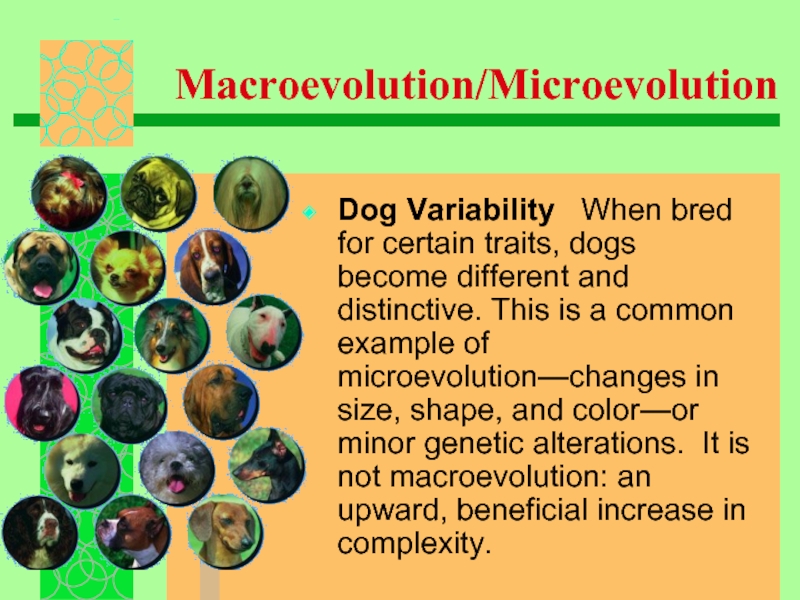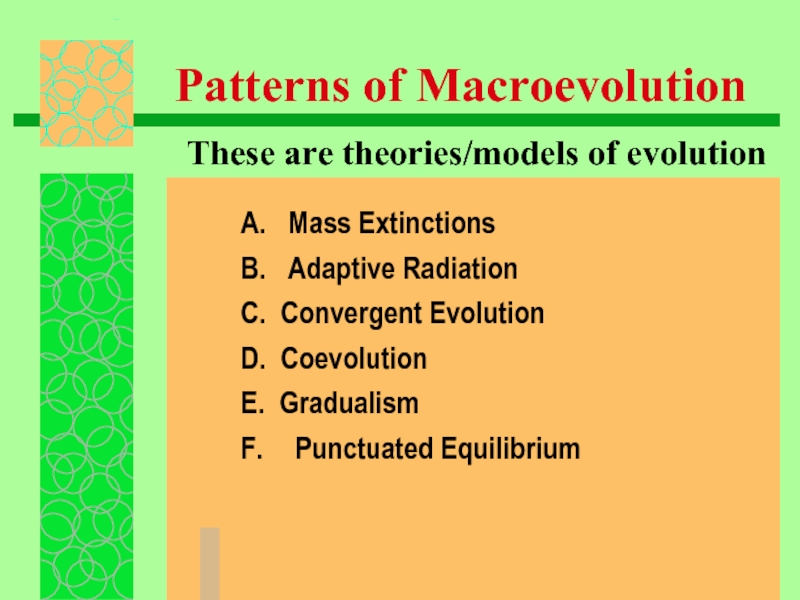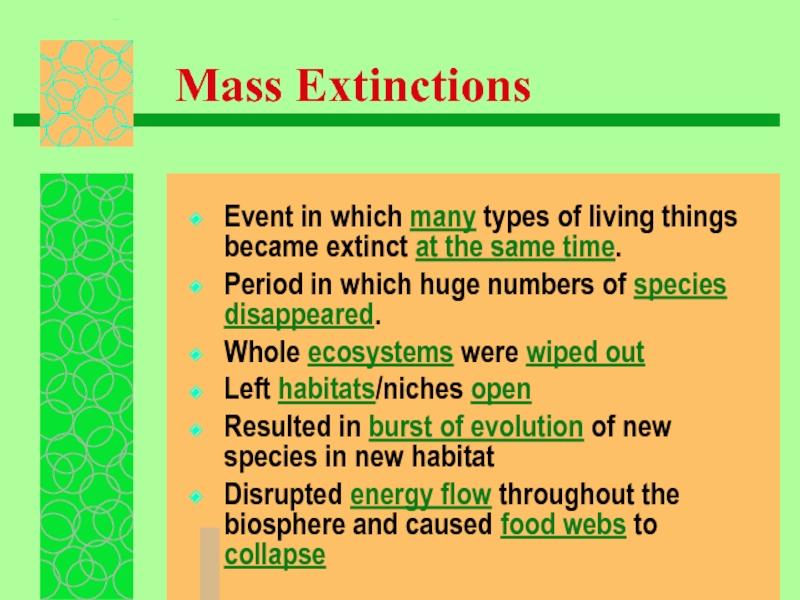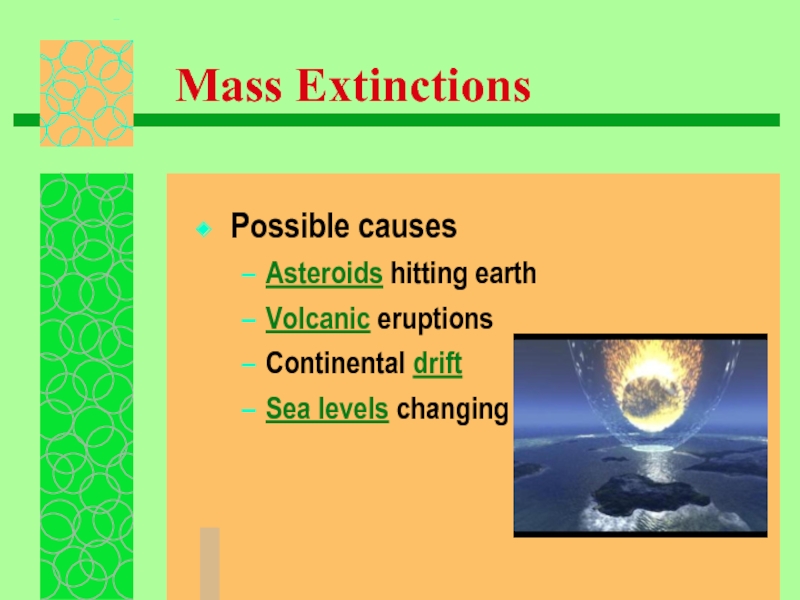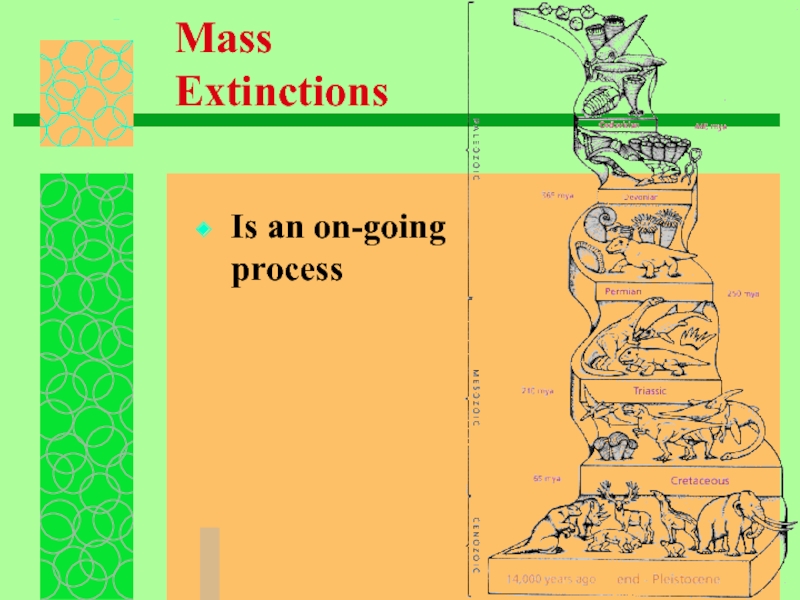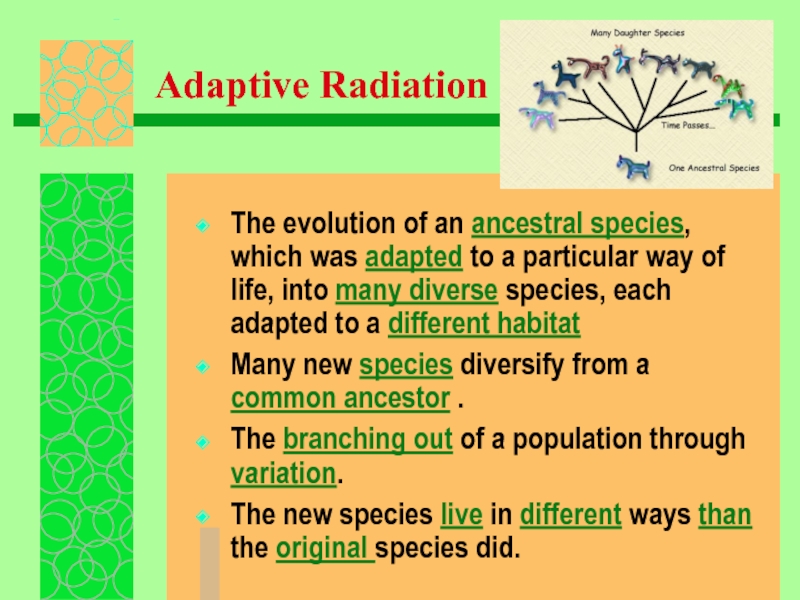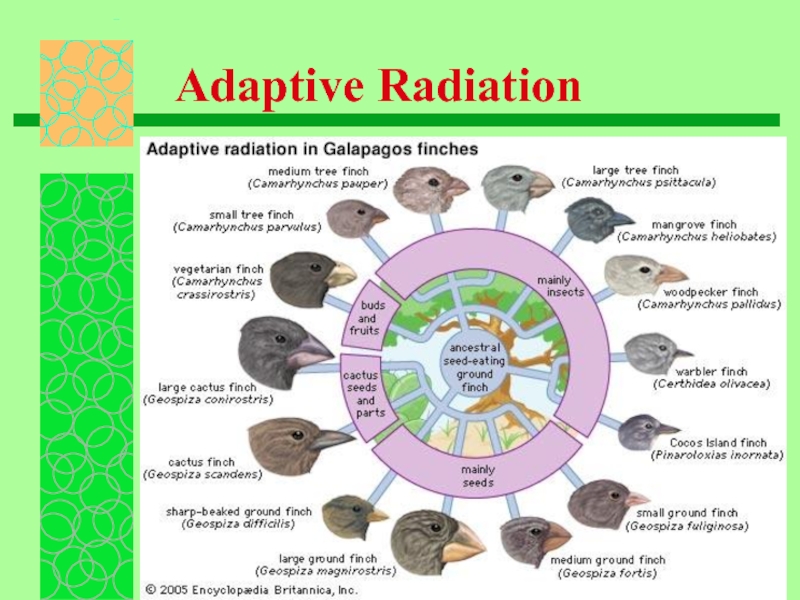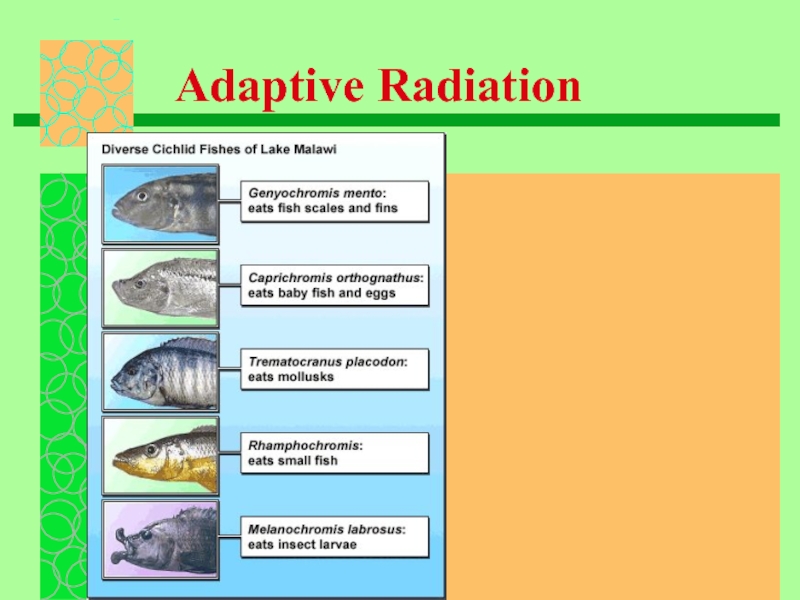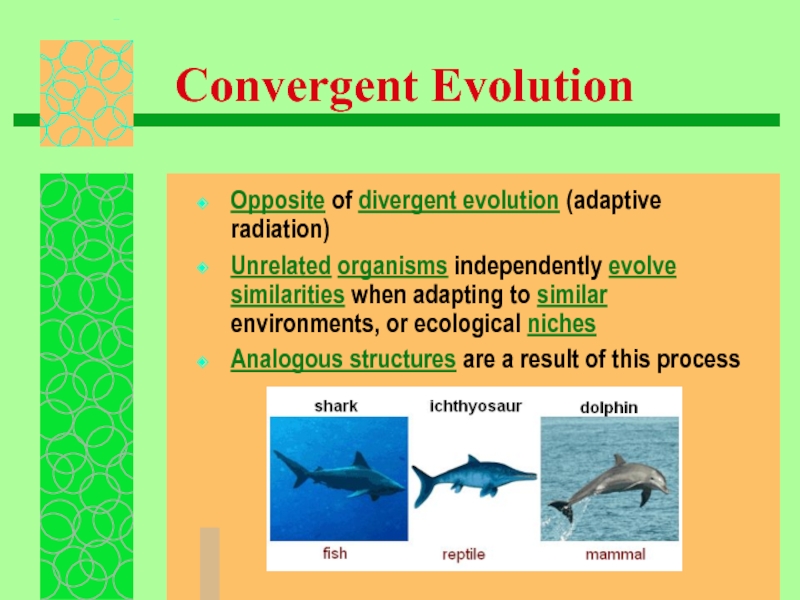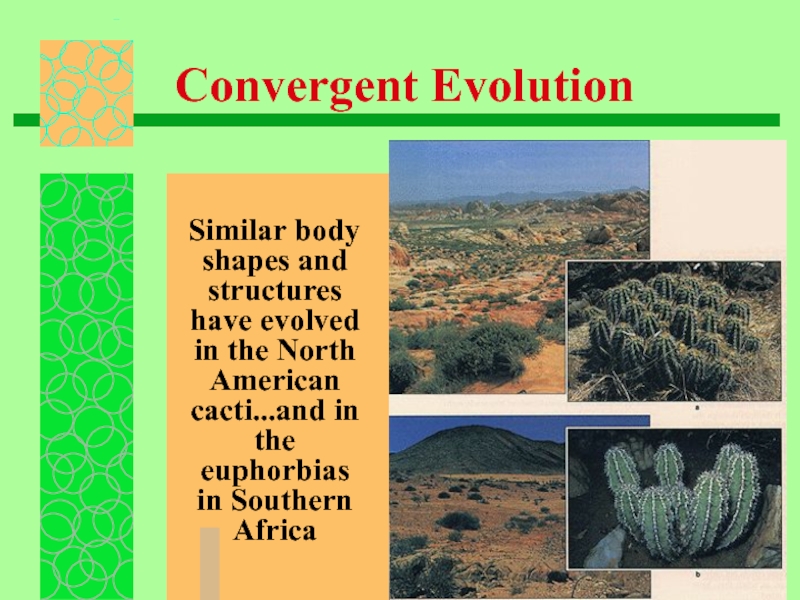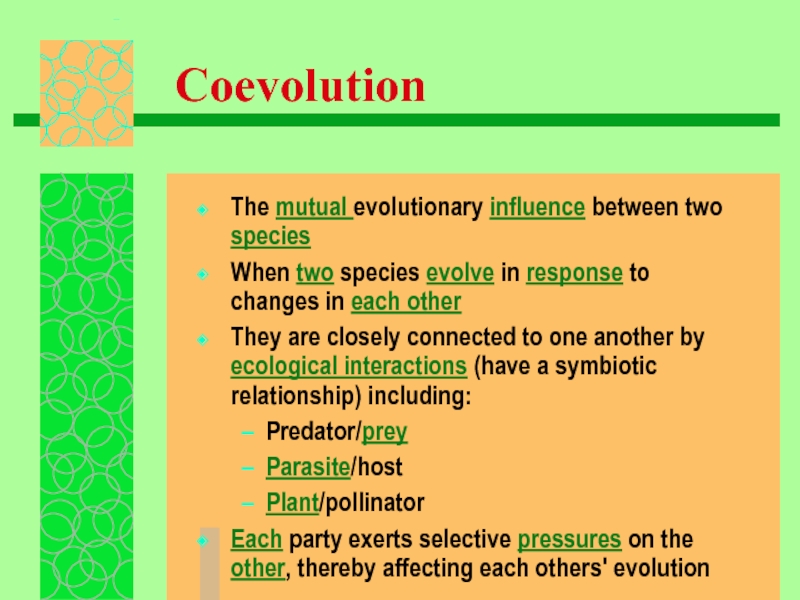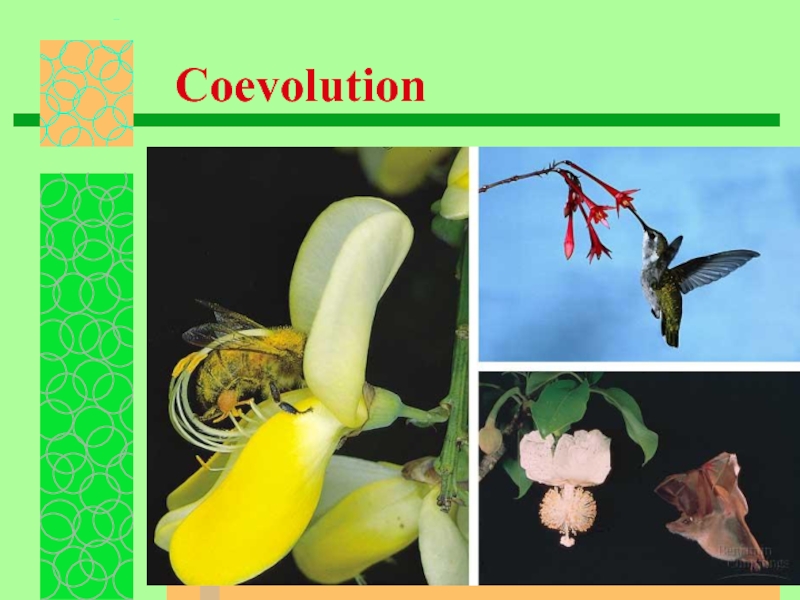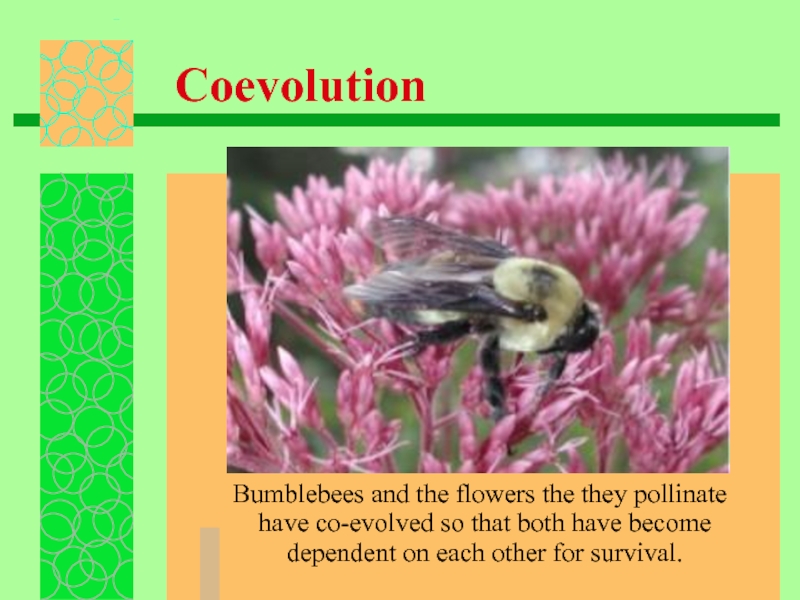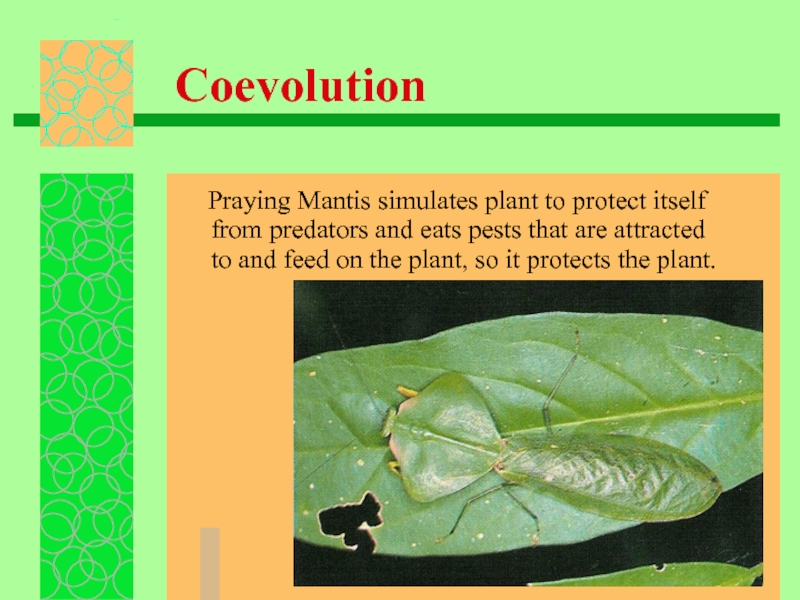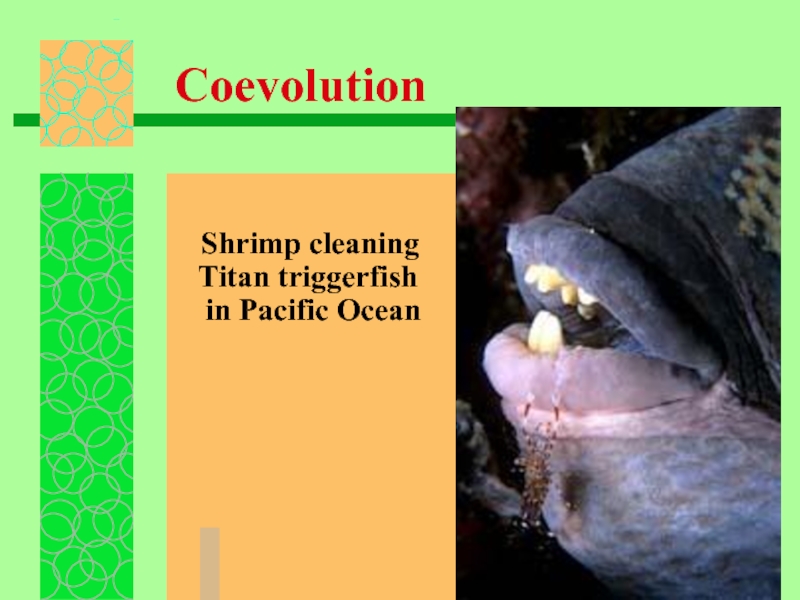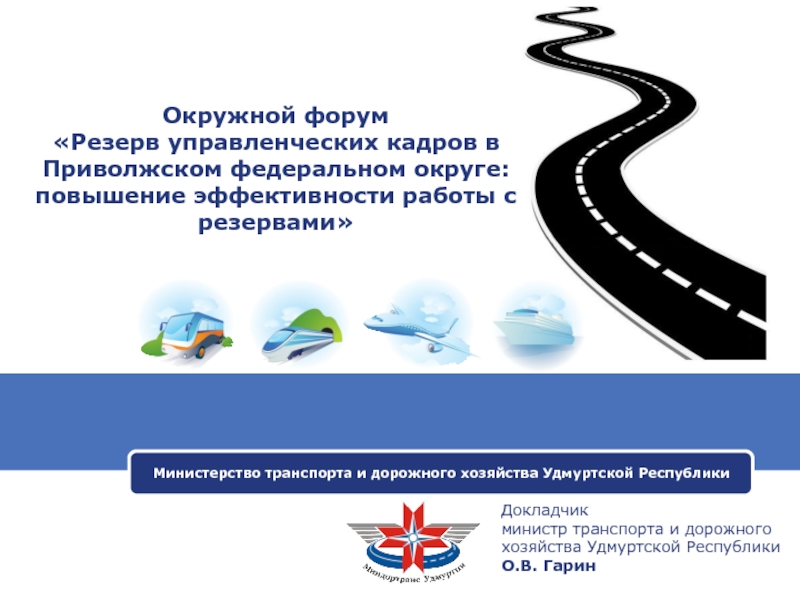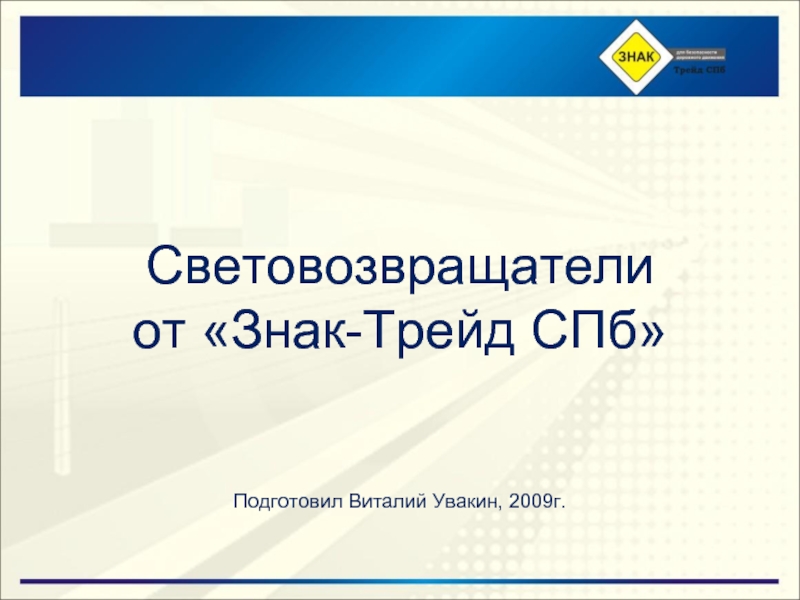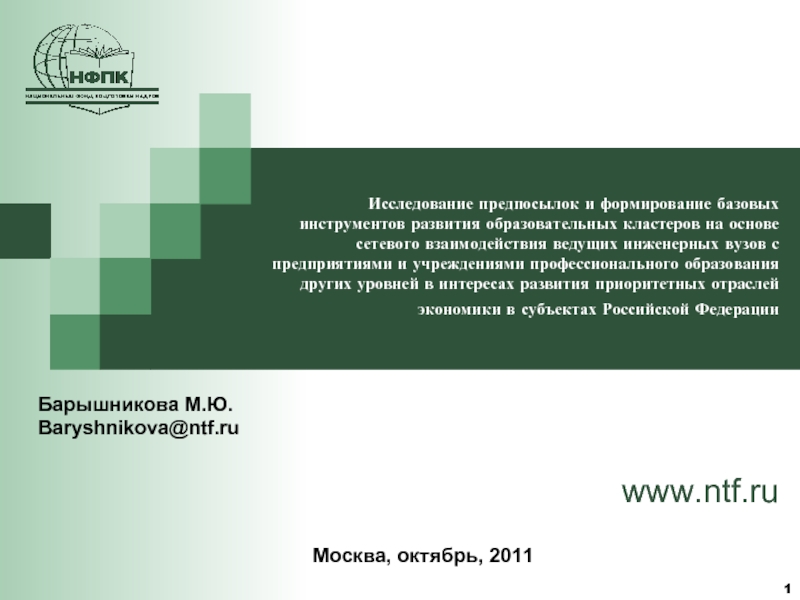- Главная
- Разное
- Дизайн
- Бизнес и предпринимательство
- Аналитика
- Образование
- Развлечения
- Красота и здоровье
- Финансы
- Государство
- Путешествия
- Спорт
- Недвижимость
- Армия
- Графика
- Культурология
- Еда и кулинария
- Лингвистика
- Английский язык
- Астрономия
- Алгебра
- Биология
- География
- Детские презентации
- Информатика
- История
- Литература
- Маркетинг
- Математика
- Медицина
- Менеджмент
- Музыка
- МХК
- Немецкий язык
- ОБЖ
- Обществознание
- Окружающий мир
- Педагогика
- Русский язык
- Технология
- Физика
- Философия
- Химия
- Шаблоны, картинки для презентаций
- Экология
- Экономика
- Юриспруденция
Patterns of Evolution презентация
Содержание
- 1. Patterns of Evolution
- 2. Macroevolution/Microevolution Macroevolution- One genus or family evolves
- 3. Macroevolution/Microevolution Both involve changes in allele frequencies
- 4. Macroevolution/Microevolution Macroevolution 1. Large-scale changes
- 5. Macroevolution/Microevolution Macroevolution 5. Has not
- 6. Macroevolution/Microevolution
- 7. Dog Variability When bred for certain
- 8. Patterns of Macroevolution A. Mass Extinctions B.
- 9. Mass Extinctions Event in which many types
- 10. Mass Extinctions Possible causes Asteroids hitting earth Volcanic eruptions Continental drift Sea levels changing
- 11. Mass Extinctions Is an on-going process
- 12. Adaptive Radiation The evolution of an ancestral
- 13. Adaptive Radiation
- 14. Adaptive Radiation
- 15. Convergent Evolution Opposite of divergent evolution (adaptive
- 16. Convergent Evolution Similar body shapes
- 17. Coevolution The mutual evolutionary influence between two
- 18. Coevolution
- 19. Coevolution Bumblebees and the flowers
- 20. Coevolution Praying Mantis simulates plant
- 21. Coevolution Shrimp cleaning Titan triggerfish in Pacific Ocean
Слайд 2Macroevolution/Microevolution
Macroevolution- One genus or family evolves into another….due to large scale
Microevolution- Small scale changes within a species to produce new varieties or species in a relatively short amount of time.
Слайд 3Macroevolution/Microevolution
Both involve changes in allele frequencies in gene pools
Both work through
The difference is largely one of approach and scale
Each offers different insights into the evolution process
Слайд 4Macroevolution/Microevolution
Macroevolution
1. Large-scale changes in gene frequencies
2. Occurs over
3. Occurs at or above the level of species in separated gene pools
4. Consists of extended
microevolution
Microevolution
1. Small-scale changes in gene frequencies
2. Occurs over a few generations
3. Occurs within a species or population in same gene pool
4. Refers to smaller
evolutionary changes
Слайд 5Macroevolution/Microevolution
Macroevolution
5. Has not been
directly observed
6. Evidence
remnants of the past
7. More controversial
8. Example: Birds from reptiles
Microevolution
5. Observable
6. Evidence produced
by experimentation
7. Less controversial
8. Example: Bacterial
resistance to
antibiotics
Слайд 7Dog Variability When bred for certain traits, dogs become different
Macroevolution/Microevolution
Слайд 8Patterns of Macroevolution
A. Mass Extinctions
B. Adaptive Radiation
C. Convergent Evolution
D. Coevolution
E. Gradualism
F.
These are theories/models of evolution
Слайд 9Mass Extinctions
Event in which many types of living things became extinct
Period in which huge numbers of species disappeared.
Whole ecosystems were wiped out
Left habitats/niches open
Resulted in burst of evolution of new species in new habitat
Disrupted energy flow throughout the biosphere and caused food webs to collapse
Слайд 10Mass Extinctions
Possible causes
Asteroids hitting earth
Volcanic eruptions
Continental drift
Sea levels changing
Слайд 12Adaptive Radiation
The evolution of an ancestral species, which was adapted to
Many new species diversify from a common ancestor .
The branching out of a population through variation.
The new species live in different ways than the original species did.
Слайд 15Convergent Evolution
Opposite of divergent evolution (adaptive radiation)
Unrelated organisms independently evolve
Analogous structures are a result of this process
Слайд 16Convergent Evolution
Similar body shapes and structures have evolved in
Слайд 17Coevolution
The mutual evolutionary influence between two species
When two species evolve
They are closely connected to one another by ecological interactions (have a symbiotic relationship) including:
Predator/prey
Parasite/host
Plant/pollinator
Each party exerts selective pressures on the other, thereby affecting each others' evolution
